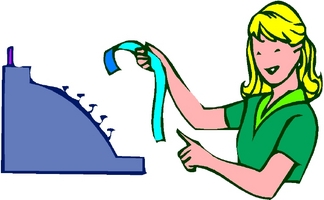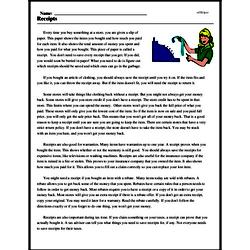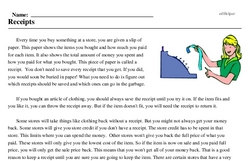Receipts
Every time you buy something at a store, you are given a slip of paper. This paper shows the items you bought and how much you paid for each item. It also shows the total amount of money you spent and how you paid for what you bought. This piece of paper is called a receipt. You don't need to save every receipt that you get. If you did, you would soon be buried in paper! What you need to do is figure out which receipts should be saved and which ones can go in the garbage.
If you bought an article of clothing, you should always save the receipt until you try it on. If the item fits and you like it, you can throw the receipt away. But if the item doesn't fit, you will need the receipt to return it.
Some stores will take things like clothing back without a receipt. But you might not always get your money back. Some stores will give you store credit if you don't have a receipt. The store credit has to be spent in that store. This limits where you can spend the money. Other stores won't give you back the full price of what you paid. These stores will only give you the lowest cost of the item. So if the item is now on sale and you paid full price, you will only get the sale price back. This means that you won't get all of your money back. That is a good reason to keep a receipt until you are sure you are going to keep the item. There are certain stores that have a very strict return policy. If you don't have a receipt, the store doesn't have to take the item back. You may be stuck with an item you hate, and you won't get your money back.




